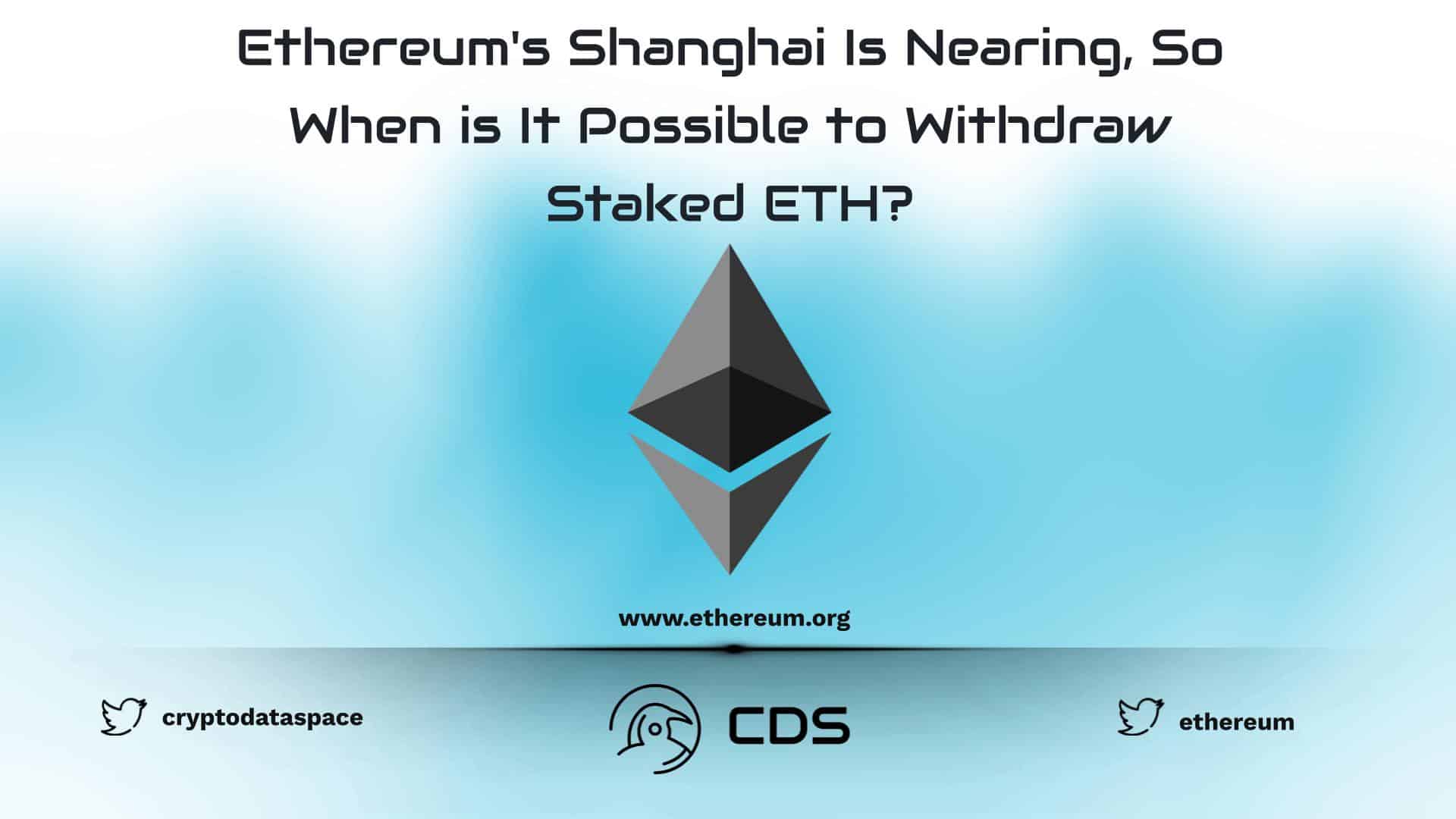The Shanghai hard fork of the Ethereum blockchain (aka Chapera) will launch on April 12th, but if you stake ETH on any staking service or pool, you may not receive your rewards right away.

Ethereum’s Shanghai Is Nearing, So When is It Possible to Withdraw Staked ETH?
With only two weeks left on the Ethereum blockchain’s Shanghai upgrade, or better known as ‘Shapella’, stakers are wondering how soon after the upgrade they will be able to access the rewards. However, depending on how you stake Ether (ETH), you may not be able to withdraw these rewards immediately. Ethereum offers different ways to stake ETH, either directly as a validator or via a staking service.
Before participating in the block validation process, validators agreed to lock up 32 ETH (currently worth about $58,000) into the Beacon Chain. But not everyone has 32 ETH, so staking services or decentralized staking pools have emerged, users can put whatever amount they want into that service or pool, and that service or protocol would then pool it together with other stakers’ ETH and lock it into the chain. Shapella automatically unlocks ETH rewards for validators.
However, in the case of service providers or staking pools, they determine themselves when to release the rewards.
Advices for Solo Stakers
There are two ways to access staked ETH withdrawals: partial withdrawals and full withdrawals. A partial withdrawal is the excess profit after 32 ETH (or earned rewards). These rewards can be revoked immediately, and reviewers continue to add blocks on the Beacon Chain. If you’re running your own validator, you’ll need to migrate your validator to include the 0x01 revoke permission. If you do not install this withdrawal authorization, partial withdrawals will not be processed automatically.

Partial withdrawals are available immediately, but receiving these rewards also depends on the number of withdrawal requests that need to be processed. Only 16 partial withdrawal requests can fit in one slot (which happens every 12 seconds). The queue can last for hours depending on how many requests come in after Shanghai goes live.
A full withdrawal, on the other hand, is when all funds, including 32 ETH, are removed from the blockchain. This means that validators no longer participate in the block validation process. A full withdrawal is not automatic, as the validator must send a message to the blockchain to add it to the exit queue. This will take time and will be released gradually.
Advices for Those Who Use Staking Services or Decentralized Pools
Anyone who has staked ETH on a staking service or decentralized pool should check with their provider for a withdrawal schedule for staked ETH. Coinbase, which operates the staking service, announced earlier this month that it would process withdrawal requests approximately 24 hours after Shapella is completed.
“All unstaking requests are processed on-chain, and we’ll pass the unstaked funds and staking rewards to you once released by the Ethereum protocol,” Coinbase said in a tweet.
Lido, the largest liquidity staking protocol, has announced that users holding stETH will not be able to claim ETH until the protocol is upgraded in mid-May. The reason for the schedule specified by Lido is to allow the protocol to pass the appropriate security checks. Another decentralized staking protocol, Rocketpool, has announced that users will be able to redeem withdrawals after the protocol undergoes an “Atlas” upgrade, although no specific date for that upgrade has been given yet.
So if you want to redeem your rewards from the ETH you wagered, check with your provider when this will happen as it may not be April 12th. Also, if you use your own validator, be sure to install the correct payment details.
Source
Check out more of our latest news here
















Leave a comment